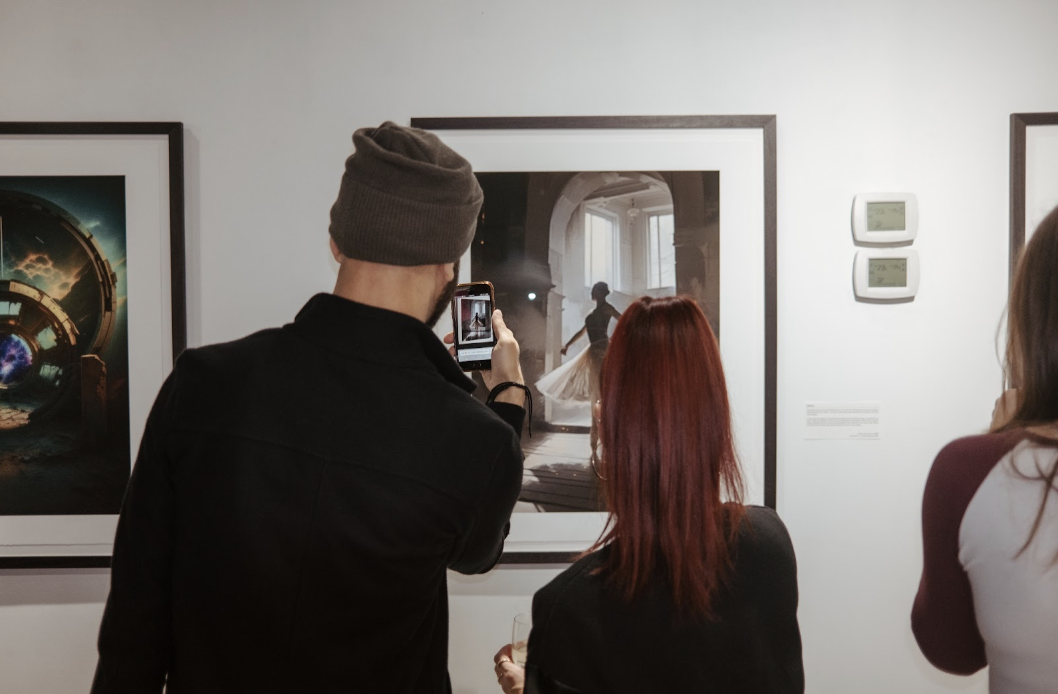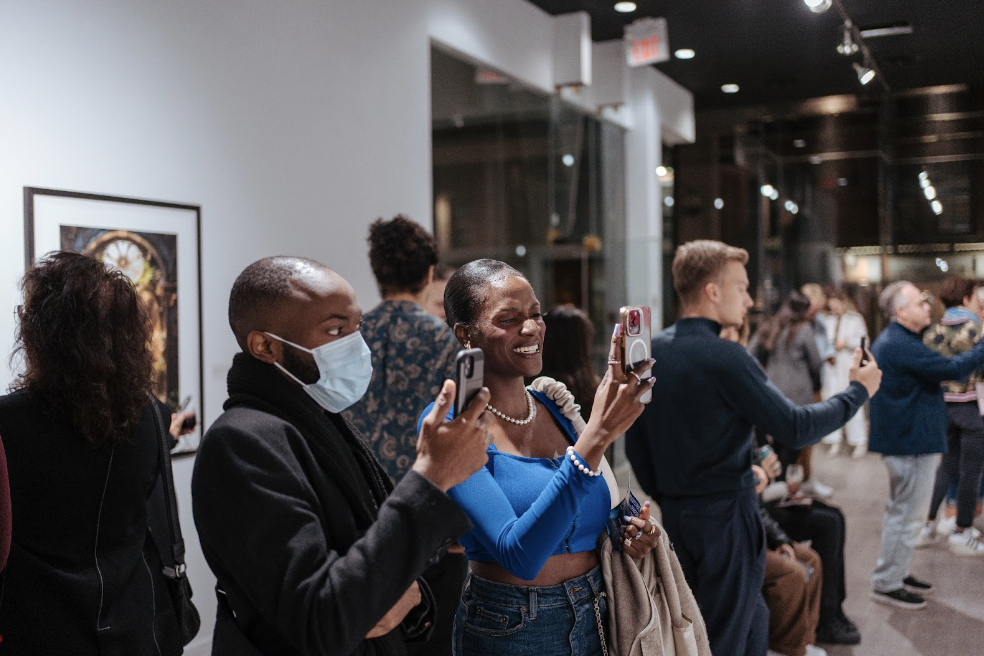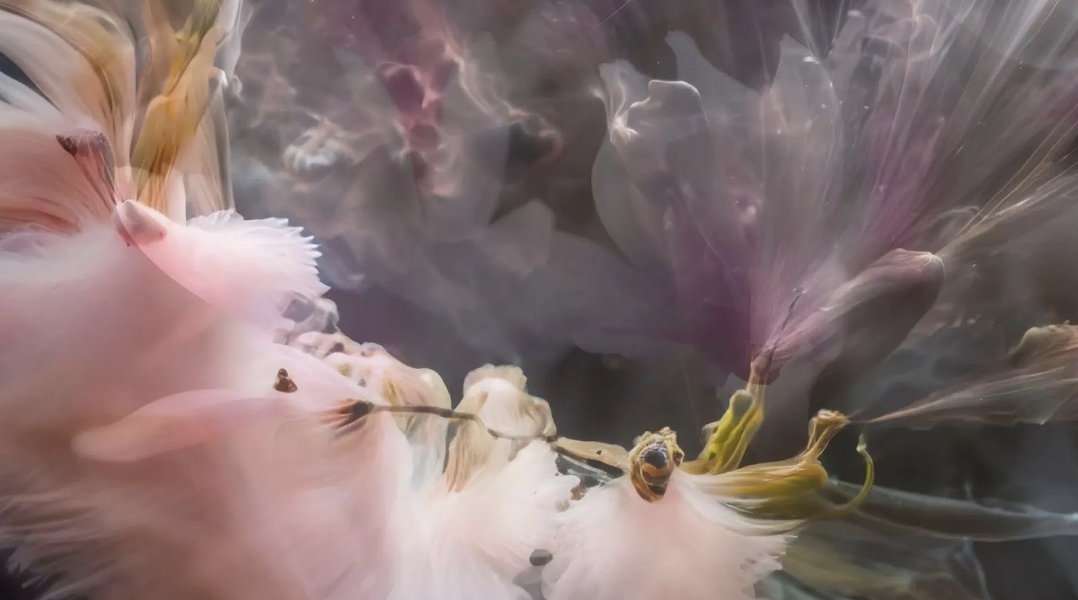How art galleries are becoming more accessible with AI experiences
Art galleries are becoming more immersive and accessible, thanks to the use of artificial intelligence. Artificially Intelligent (AI) art encompasses any visual image or scene created by digital tools. The technology pulls from existing data and algorithms to generate something innovative and tangible to be hung on gallery walls.
AI art rose to popularity in 2022 with digital art generators like Midjourney and Artbreeder. These online platforms collect data and generate images in any style possible, based on the information a user inputs. Since then, AI art has made its way into many galleries including the renowned Museum of Modern Art in New York with Refik Anadol’s ‘Unsupervised’ exhibit earlier this year.AI art is often dreamy and surreal.
By combining real life images and shapes, imaginary scenes emerge quickly and magically, making the experience more immersive for today’s easily distracted consumer. However dreamy this art style can get, it’s not out of reach, particularly so for those facing barriers to experiencing traditional art.

Refik Anadol’s “Unsupervised“ exhibit at the Museum of Modern Art, image courtesy of MoMa N.Y.
Accessibility of AI art
The functionality of AI art and digital programming extends to everyone, regardless of physical and visual disabilities and impairments. With AI tools like text-to-image becoming increasingly user-friendly, we spoke with digital artist Ryan Kelln. He says, “We are transitioning to a society where artistic expression of all kinds is as common as reading and writing, and that will be a fundamentally more equal and free society.”
Showcasing AI art in galleries provides the opportunity for people to interact with more art, rather than simply seeing it. Engaging the senses by incorporating sound and touch can make for a more immersive experience. Kelln says that with more time and resources, future exhibitions can spotlight intricate pieces incorporating responsive AI, fostering audience interaction.
The attraction towards the AI art experience comes down to the creative minds behind it. Rapidly advancing tools make art easier to create and share, while still revealing the human inspiration behind each work. Accessing AI art online and in gallery settings like the Masterpiece AR and “When All Dreams Come True” exhibitions could spark many more interactive events in the future as technology evolves. Regardless of how far these tools can develop, AI is here to stay and galleries are learning how to work with it.
Many innovative AI artists are featured in galleries around Toronto, some taking a unique approach to enhance the viewer’s experience.

Masterpiece AR event photographed by Brandon Dacosta.
Interactive galleries
Masterpiece AR is an augmented reality platform bridging the physical with the digital through gallery events. In October, the company hosted its first event called “After Dark: Art Gallery and Drinks” at the Blitz Art Gallery in downtown Toronto. Shah Shakibai, the co-founder of Masterpiece AR describes the gallery as having physically framed AI-generated art on walls like a traditional gallery, but with an added layer of interactive augmented reality happening on your phone. “A large part of the experience happens on your phone – there’s sound, there’s motion – it’s very personal. You become an extension of the art,” he says.
The technology works by opening your phone’s camera through the Masterpiece AR website and holding it up to a still piece of art to see it begin to move on your screen. “Our augmented reality (AR) technology doesn’t require an app download, which significantly reduces the friction associated with the experience,” he said, adding, “I think people end up leaving with more vivid memories and appreciation for what they see when they are more than just observers to it.”
Shakibai and his partner, Sunny Atwal, came up with the idea of combining their backgrounds in augmented and virtual reality and generative AI to create these interactive art events. While the events make Masterpiece AR art easier to access with a phone, bridging the gap between still art and moving images on a mobile device isn’t easy.
The pair had to build the technology first, then incorporate augmented reality into each work. “Each piece of art had to overcome a technical challenge, so we dedicate time to talking about those challenges, and in the process, we explain the benefits and limitations of AI. People leave a bit more knowledgeable about how AI works, its applications, what it can and can’t do, and the future of it.” Shah said.
Events also keep people in the AI loop. “By demystifying AI we actually get people excited about AI. It becomes less about ‘Skynet is going to kill us all’, and more about ‘Hmm, I get how I can use this myself’.” To experience interactive AI art, details about events for 2024 will be available online and on Masterpiece AR’s Instagram page.
As for the future of AI, Shah says, “These are early days, and we’re all still watching the beauty and horror of AI unfold.”

Masterpiece AR event photographed by Brandon Dacosta.
The future of Artificial Intelligence
While some artists may worry about the rise of AI technology, others are embracing the skepticism surrounding it. “The decentering of human intelligence will hopefully transform our relationship with all other life and the intelligent machines we build,” Kelln says.
With a background in visual arts computer science, Kelln dove into a conceptual and digital art career in search for more “meaning” in life. He has blended music, AI and conceptual art to showcase his vision of the future.

Ryan Kelln, “Blossoms”, 2023.
When all dreams come true
Throughout May and June, Kelln put the future of AI to the test by curating exhibits around Toronto and the GTA. The exhibition, “When All Dreams Come True” displayed AI-generated art from around the world, sparking curiosity about the medium itself. “A common sentiment was one I share too, of ‘anxious awe,’ stemming from the rapid advancements in AI and the associated ethical dilemmas,” Kelln said.
The exhibitions bridged concern with admiration toward the technology. Kelln says, “There was thoughtful concern from existing artists that these tools might hide or de-emphasize traditional art making processes, but I think of technique as a key that opens the door to art making,” adding, “I have faith that people will find the techniques that speak to them once the door to art making has been opened.”

Mark Vargo “Self Portrait of Artificial Intelligence”, 2023, and Suzanne Schneider “Smell The Roses”, 2023.
Digital techniques were on display at the exhibits, with two particular artists exploring the possibilities AI might bring to the future of art. Kelln says, “Mark Vargo scanned in his own physical visual artworks and trained a text-to-image AI on them and is now generating thousands of images in his own style. He can use these as inspiration or finished works and now has the ability to easily mix his existing style with others helps him explore and discover what is important to him.”
The technology can even spread to the therapy world. Suzanne Schneider, a featured artist in the exhibit, is training to be an art therapist and using AI to generate a meditative experience through videos and customized images for patients. These creative endeavors allow AI art to be more accessible across various environments outside of an art gallery.
Loved art inspired by technology? Read Art In The Age of Digital Reproduction.






